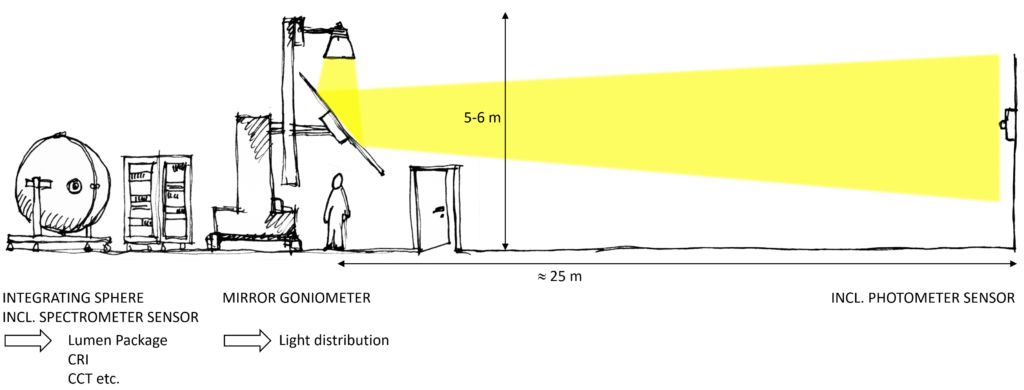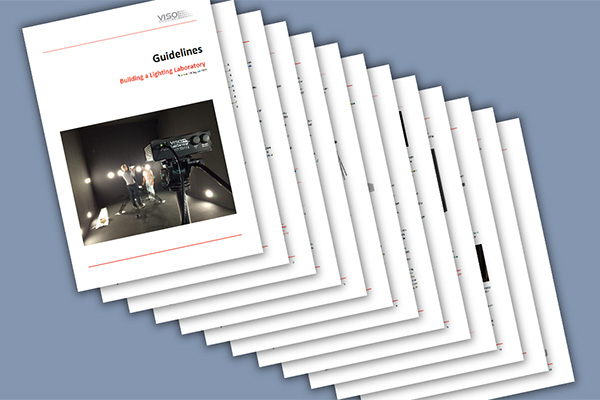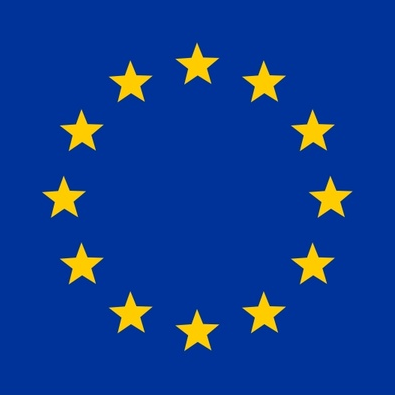Traditionally, a photometric laboratory took up lot of space, but a measurement system from Viso will fit in almost anywhere. Many clients ask for advice in terms of lab sizing, black materials and baffles. You’ll find lots of useful information in these new Viso guidelines.
The traditional photometric laboratory

In a traditional lighting lab the light sources would have to be tested twice: In a large gonioPHOTOmeter and then in an integrating sphere. The goniophotometer would capture the light distribution in photometric units (lumen, candela). The photosensor would have be about 25 m away to fulfil requirements for a type-c setup. A full-fledged mirror goniometer would take room height of about 5-6 m/ 18 ft. The integrating sphere would be necessary to capture all color data such as color temperature [CCT in Kelvin] and Color Rendering Index [CRI]. Control systems would be contained in a large instrument rack.
The Viso lighting laboratory

A Viso system is much simpler because it is based on a gonioSPECTROmeter. Hence, all color data are captured at once and form the basis of calculation for the photometric data (lumen, candela etc.). Read more about Viso technology here.
The result is that photometric laboratories with Viso equipment take up a minimum of space. A measuring tunnel (height and width 2.5 m or 8.3 ft) with a length matching 8- to 2 times the size of your light sources will be adequate.
More good advice for photometric laboratories
Standards for good laboratory practices exist. Worth mentioning are especially:
- ANSI/IES LM-79-19 (Approved Method: Optical and Electrical Measurements of Solid-State Lighting Products by Illuminating Engineering Society, 2019), and
- CIE S 025 (Test Method for LED Lamps, LED Luminiaries and LED Modules, The International Commission on Illumination, 2015)
The Viso guidelines summarize the most important practical advice, and enables you to build your own photometric laboratory or improve your existing facilities.


